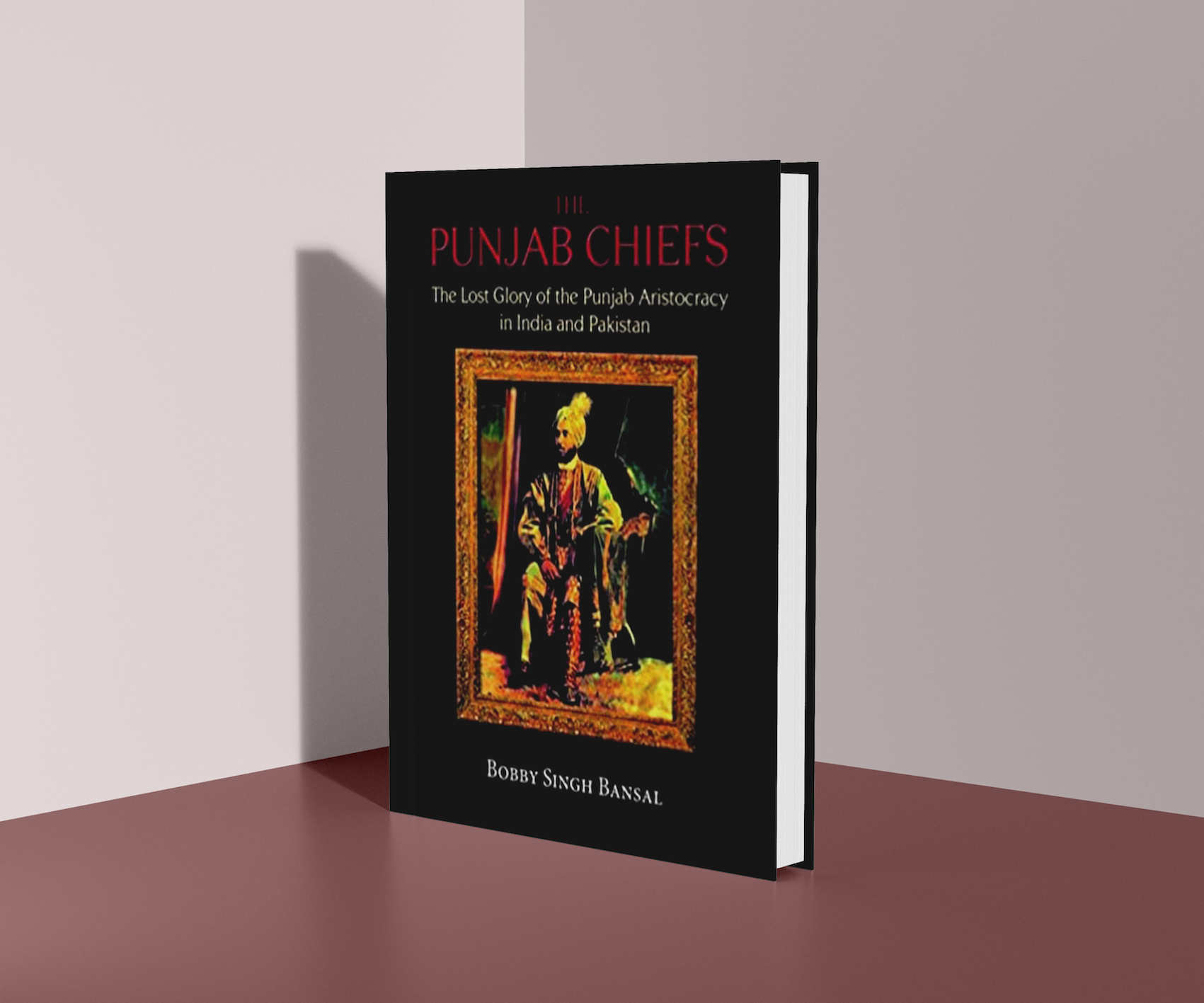Bobby Singh Bansal’s historical oeuvre, The Punjab Chiefs: The Lost Glory Of The Punjab Aristocracy in India and Pakistan, is undoubtedly his magnum opus. To trace and record the historical narratives of the progeny of Maharaja Ranjit Singh’s courtiers is a Sisyphean task. Yet, Bansal manages to capture the very quintessence of the aureate period of Sikh history with eloquence.
The practice of recording the histories of the notable families of Punjab was first initiated in 1865 by Sir Lepel Griffin. It is in his tradition that Bansal aspired to present an updated edition of Griffin’s much-celebrated work of the same name. He has used a golden thread to deftly weave 200 years of Punjabi culture into the precincts of the book, breathing in techni-coloured life into the sepia portrait of Maharaja Ranjit Singh’s undivided Punjab.
Bansal paints a compelling portrait of the powerful families of the Lahore Durbar, including Maharaja Ranjit Singh’s family and the great general Sham Singh Attari’s family. The immersion of the past with the present makes his work historical and contemporary at the same time. Bansal doesn’t only excavate prestigious families from the mines of time, he also digs up emotions, roots, associations, lost glory and pride.
A progeny of one such family myself, the nostalgia that this book evokes is deeply personal to me. My great grandfather, once the largest landlord of undivided Punjab, was reduced to a mere refugee in the event of the Partition. My family was cruelly uprooted from what they had called home for 200 years. They left their centuries-old home and a gazillion memories in what is now Pakistan. Physical losses aside, the emotional toll of this devastating displacement was immensely catastrophic. My entire clan built their entire life once more from scratch.
Also read: ‘Who Am I To Avenge?’: My Grandfather’s Partition Memories
In the early 2000s, a member of our family visited our village of Manawala, now a bustling city in Sheikhupura district, Punjab, Pakistan. The old people of the village cried and welcomed the representative of our family with open arms. They harked back to the halcyon days of life under the sardars of Manawala. Our haveli still stands erect. It is now inhabited by multiple families of the village who take great pride in preserving it.
My grandfather continued to live with a longing for his past all his life. He transferred his centuries-old association with his roots to us through his nostalgia-laden stories and anecdotes. He could never summon the emotional courage to visit Manawala again, even though he got multiple opportunities to do the same. The families that Bansal covers left their homes, their friends and their centuries-old histories on the other side of the border. It is that nostalgia and faded history that Bansal succinctly articulates and captures so deftly and in doing so he does great service to families like mine.
A rich tapestry of historical accounts, personal anecdotes, rare pictures and nostalgia, The Punjab Chiefs is a history aficionado’s treat. It is also a tribute to long severed ties and cruelly uprooted roots. Bansal has not only excavated history, but he has also excavated emotions and traditions, anecdotes and associations.
“The partition of India in 1947, dealt a severe blow to the landed gentry in western Punjab, compelling wealthy Sikh and Hindu landowners to abruptly abandon their vast ancestral estates, their relics and personal possessions. They were forced to migrate east to India virtually empty handed, becoming mere refugees without any status.”
It is this dastardly loss that Bansal tries to revoke through the celebration of the Lahore Durbar’s erstwhile pride and glory.
With his cultural treatise, Bansal dives headlong into the very foyers of the Sher-e-Punjab’s venerable court. The Lahore Durbar was the very acme of Punjabi tradition, culture and power. The annexation of Punjab in the year 1849, subsequently followed by the Partition of Punjab in 1947, greatly diminished the glory of the chiefs of undivided Punjab.
Wreaked by the change in regime, a large number of these noble families were suddenly reduced to nought. Yet, their histories deserve to be celebrated because their contemporary impoverishment or ostensible irrelevance is not reason enough to shun their notable family histories into the sleep of oblivion.
Also read: Two Unheard Partition Narratives That Underscore the Importance of Oral History Projects
A number of the distinguished ancestors of these families fought bravely alongside the Maharajah in the Anglo Sikh wars. Yet, their stories are anything but ubiquitous in the collective memory of Punjab. Overshadowed and covertly negated by the Malwa chiefs largely due to the ravages of Partition, scant little is written or spoken about them. Their well-researched stories have managed to resonate at last amid the pages of Bansal’s book.
Today, the word aristocracy may arouse a lot of resentment yet the nobility on the other side of the Sutlej weren’t just bejewelled, armchair aristocrats. The jagirs and pensions of a large bulk of these families were either resumed or confiscated in the event of regime change. It was not uncommon for proud scions of illustrious families who had fought valiantly against the Afghans and the British to be reduced to little more than impoverished peasants in the event of a regime change. Yet even in the face of adversity, the resilience of these families shone piercingly like a brightly polished diamond.
The steely determination and perseverance of their character are what constitutes true aristocracy. The nobility of the Durbar wonderfully displayed its ability to thrive in the face of utter devastation twice, first during the annexation of Punjab and subsequently during the Partition of India. It is this grit and steadfastness of character that makes an aristocrat a noble aristocrat and it is this very picture that Bansal painstaking paints.
Featured image credit: Amazon; Editing: LiveWire/Ujjaini Dutta

